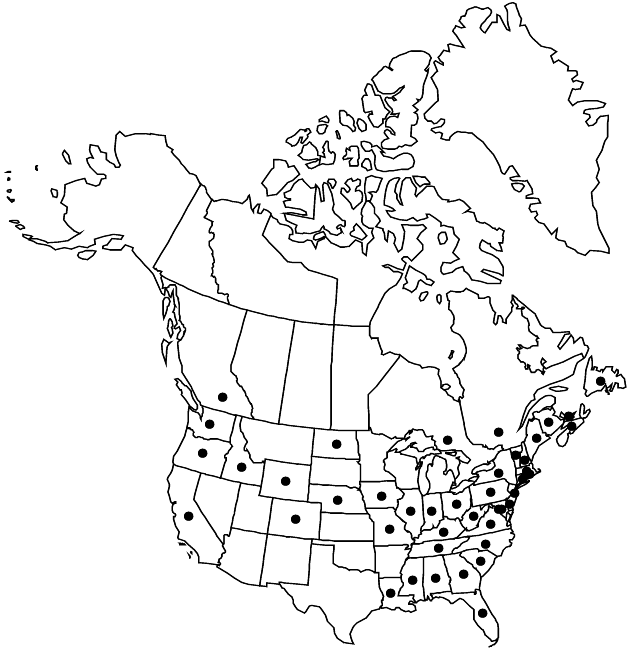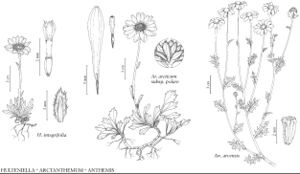Anthemis arvensis
Sp. Pl. 2: 894. 1753.
Annuals (sometimes persisting), (5–) 10–30+ [–80] cm, not notably scented. Stems green or reddish, decumbent (sometimes rooting at nodes) or ascending to erect, branched mostly proximally, ± strigoso-sericeous or villous, glabrescent. Leaf-blades 15–35 × 8–16 mm, 1–2-pinnately lobed (ultimate lobes triangular to narrowly elliptic or linear). Peduncles mostly 4–15 cm (sometimes clavate in fruit). Involucres 6–13 mm diam., ± villous. Receptacles paleate throughout; paleae lanceolate to oblanceolate, weakly navicular (± carinate), 3–4+ mm (including acuminate-spinose tips). Ray-florets 5–20, pistillate, fertile; corollas white, rarely tinged with pink, laminae 5–15 mm. Disc corollas (sometimes tinged with purple) 2–3 (–4) mm. Cypselae 1.7–2+ mm, ribs smooth or weakly tuberculate (sometimes separated by relatively deep furrows); pappi 0 or coroniform (0.01+ mm). 2n = 18.
Phenology: Flowering May–Jul(–Sep).
Habitat: Disturbed sites, abandoned plantings
Elevation: 10–400+ m
Distribution

Introduced; B.C., N.B., Nfld. and Labr. (Nfld.), N.S., Ont., P.E.I., Que., Ala., Calif., Colo., Conn., Del., D.C., Fla., Ga., Idaho, Ill., Ind., Iowa, Ky., La., Maine, Md., Mass., Miss., Mo., Nebr., N.H., N.J., N.Y., N.C., N.Dak., Ohio, Oreg., Pa., R.I., S.C., Tenn., Vt., Va., Wash., W.Va., Wyo., Europe
Discussion
Anthemis arvensis is morphologically variable; it is found throughout much of North America.
Selected References
None.
Lower Taxa
"broader" is not a number."+cm" is not declared as a valid unit of measurement for this property.
